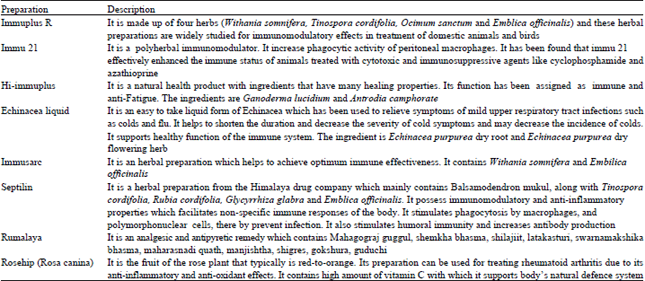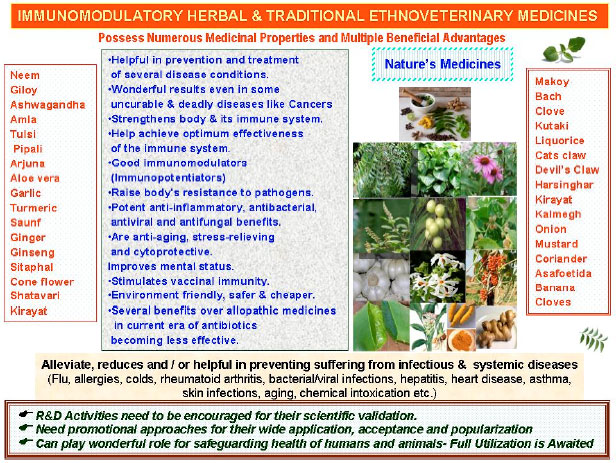Review Article
Immunomodulatory and Therapeutic Potentials of Herbal, Traditional/Indigenous and Ethnoveterinary Medicines
Department of Animal Nutrition, Uttar Pradesh Pandit Deen Dayal Upadhayay Pashu Chikitsa Vigyan Vishvidhyalaya Ewam Go-Anusandhan Sansthan (DUVASU), Mathura, 281001, India
Anu Rahal
Department of Veterinary Pharmacology and Toxicology, Uttar Pradesh Pandit Deen Dayal Upadhayay Pashu Chikitsa Vigyan Vishvidhyalaya Ewam Go-Anusandhan Sansthan (DUVASU), Mathura, 281001, India
Rajib Deb
Animal Genetics and Breeding, Project Directorate on Cattle, Indian Council of Agricultural Research, Grass farm Road, Meerut, Uttar Pradesh-250001, India
Shyma K. Latheef
Immunology Section, Indian Veterinary Research Institute, Izatnagar, India
Hari Abdul Samad
Division of Animal Physiology and Climatology, Indian Veterinary Research Institute, Izatnagar, India
Ruchi Tiwari
Department of Veterinary Microbiology and Immunology, Uttar Pradesh Pandit Deen Dayal Upadhayay Pashu Chikitsa Vigyan Vishvidhyalaya Ewam Go-Anusandhan Sansthan (DUVASU), Mathura, 281001, India
Amit Kumar Verma
Department of Veterinary Epidemiology and Preventive Medicine, Uttar Pradesh Pandit Deen Dayal Upadhayay Pashu Chikitsa Vigyan Vishvidhyalaya Ewam Go-Anusandhan Sansthan (DUVASU), Mathura, 281001, India
Amit Kumar
Department of Veterinary Microbiology and Immunology, Uttar Pradesh Pandit Deen Dayal Upadhayay Pashu Chikitsa Vigyan Vishvidhyalaya Ewam Go-Anusandhan Sansthan (DUVASU), Mathura, 281001, India
K. Dhama
Division of Pathology, Indian Veterinary Research Institute, Izatnagar, Bareilly, 243122, India










